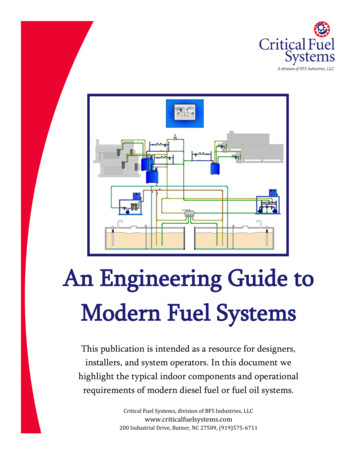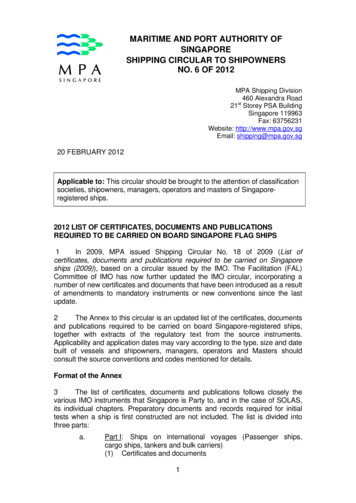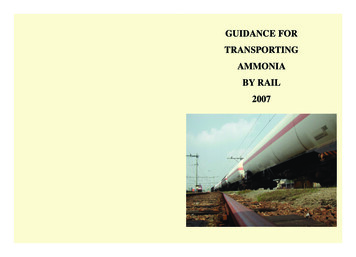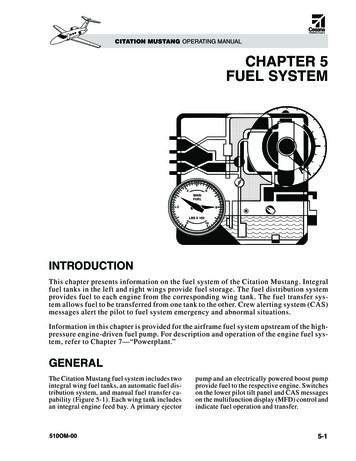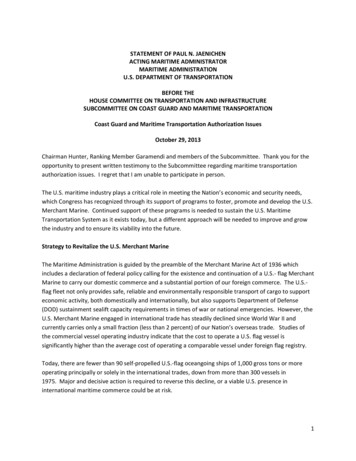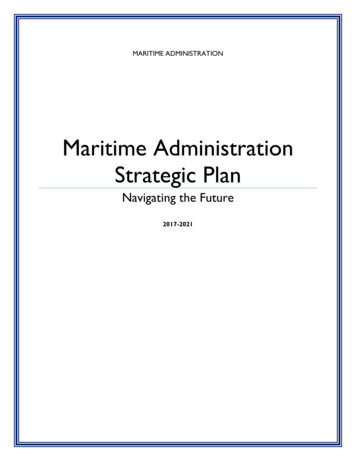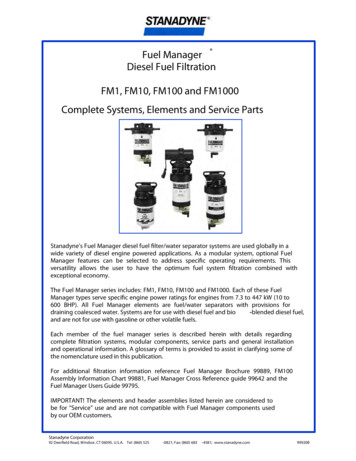
Transcription
Ammonia asMaritime FuelMay 7, 2021David HumeMarine Energy Managerdavid.hume@pnnl.gov
Ships are UniqueVessels are as varied as themissions they serve and thecargoes they carry. Vessel typesinclude: FerriesFishing boatsHarbor tugsOffshore workboatsCable-laying shipsContainer shipsRoll-on/Roll-off shipsTankersand more 2
Ships andEnergyVessel propulsion hastrended towardsenergy sources thatare cheap, readilyavailable, and energydense1570s – 1860s1820s – 1920s1910s - Present?3
The Maersk Triple E Classvessels can carry more than18,000 TEUs, their propulsionplant is rated at approximatelyAt cruising speed they will useabout 100-150 tons of fuel oileach day60 megawatts4
Shipping EmissionsProjected to 2050Under business-as-usualscenarios, shipping couldaccount for 17% of globalcarbon emissions by 2050 900 MtonsGoalSource: IMO 4th GHG Study5
Need Multiple Solutions for MaritimeDecarbonizationMaritime Forecast To 2050 - Energy Transition Outlook 2019. DNV GL6
Technology and Fuel Pathways7
Uncertainty in Fuels of the FutureAmmonia Energy Conference 2020 (T. Johannessen) 19.11.20208
MGO to NH3Compared to MGO,ammonia’s energy contentis less than half on a massbasis and about 30% on avolume basis in liquid state.“Ammonia as a Marine Fuel” DNV Group Technology and Research, White Paper 20209
Advantages and Disadvantages of Ammonia as aMarine FuelAdvantages Storage is easier and cheaper than H2Has been carried by ships as a cargo and beenused in Selective Catalytic Reduction (SCR)systems for decadesAs a cargo, there are established safe handlingproceduresIts use as a fuel will nearly eliminate particulatematter and black carbon emissions, and CO2 ifproduced using renewablesCan be used by both internal combustionengines and fuel cells, potential for retrofits ofships using ICEsDisadvantages It’s toxic, engine rooms will need additionalsafety equipment, such as emergencyventilation and gas-absorption systems Below deck piping will likely need to be doublewalled When burned at high temperatures, ammoniaproduces NOX emissions, currently under strictregulations, requires the addition of an SCR Industry has limited little operating experienceusing it as a fuel in internal combustion engines Ships will need to accommodate larger storagetanks, potentially eating into cargo space10
Ammonia as a Marine Fuel – Market Opportunities About 180 million tons of ammonia are produced worldwide, about 10% aretransported by sea. Currently there are 200 gas tankers that can takeammonia as cargo and typically 40 of them are deployed with ammonia cargoat any point of time. These are potential early adopters. One ocean-going vessel would require approximately 60,000 tons of ammoniaas fuel each year, or about 15M at current spot market rates. Researchers estimate that up to US 1.4 – 1.9 trillion will be needed toachieve the IMO’s emissions-reduction target. One consultancy predicts thatammonia could make up 25% of the maritime fuel mix by midcentury, withnearly all new builds running on ammonia from 2044 onward MAN B&W, one of the largest marine engine manufacturers, claims that morethan 3,000 existing MAN engines can be modified into ammonia engines11
Ammonia as a Marine Fuel: Challenges Food vs. fuel - Ammonia may compete with fertilizer for food production, with potentially serioussocio-economic ramifications. Can ammonia production scale to meet the demands of agricultureand maritime? Globally, ships consume an estimated 300 million tons of marine fuels every year. Given thatammonia’s energy density is half that of diesel, ammonia producers would need to provide twice asmuch liquid ammonia if it were to completely displace fuel oil, or about 550 million tons. Is thecapacity available? The cost of green ammonia is currently at least twice the 2019 cost of VLSFO. Research suggestsprices would have to be about 15% lower for ammonia to be financially viable. Is a carbon priceneeded to close the gap in the short term? Most commercial vessels have operating lives of 20-30 years, many of the ships being built thisdecade will be in operation in 2050. Retrofits will be key to reach IMO goals – this will likely meanmodifying existing diesel engines and engine rooms (double walled piping, new ventilation systems,new fuel storage tanks) IGC Code and IGF Code currently do have regulations, or do not allow, ammonia as a fuel, this willrequire working with the appropriate regulatory bodies to change, can take years12
Tipping Point forAlternative MarineFuels?Getting to Zero Coalition, “Five percent zero emission fuels by 2030 needed for Paris-aligned shippingdecarbonization” March 202113
Thank you14
Maritime Forecast To 2050 - Energy Transition Outlook 2019. DNV GL 6 . Technology and Fuel Pathways 7 . Uncertainty in Fuels of the Future Ammonia Energy Conference 2020 (T. Johannessen) 19.11.2020 8 . MGO to NH 3 Compared to MGO, ammonia's energy content is less than half on a mass

